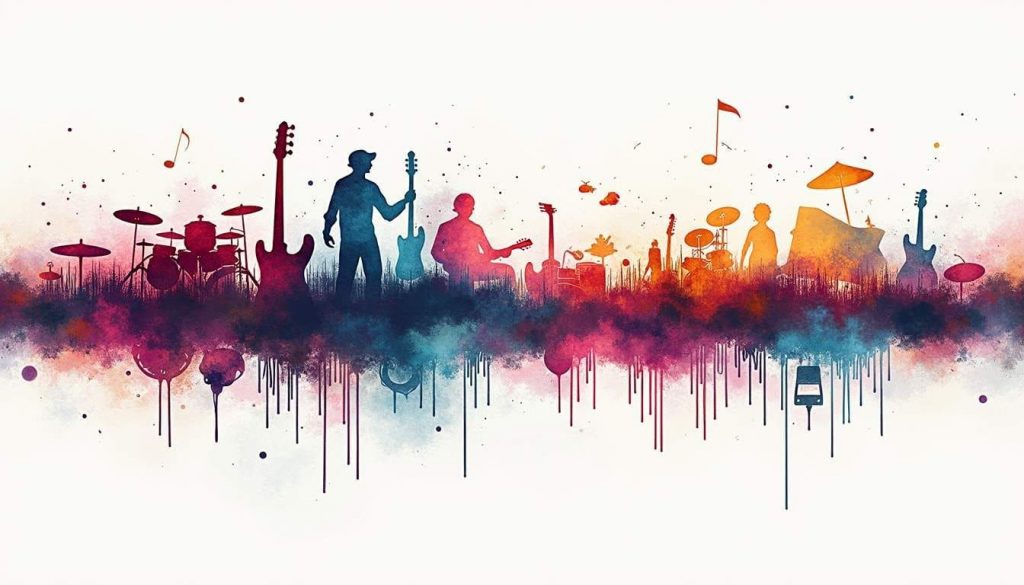Video game music is one of the most powerful storytelling tools in modern gaming. From nostalgic 8-bit chiptunes to sweeping orchestral scores, great soundtracks can transport players into entirely new worlds. But what makes great video game music truly stand out?
Whether you’re a developer looking to hire a video game composer or a music lover curious about the craft, understanding the key ingredients of memorable game music can help you appreciate the art form on a deeper level. In this guide, we’ll explore the core elements of video game music composition, the evolution of game soundtracks, and famous examples that have shaped the industry, from The Legend of Zelda to Journey and beyond.
If you’re planning your next game and want to bring it to life with a professional soundtrack, read our Video Game Composer Rates Guide.
The Evolution of Video Game Music
The journey of video game music is a fascinating one, marked by technological advancements and creative breakthroughs. From the early days of 8-bit tunes to today’s orchestral masterpieces, each era has contributed to the rich tapestry of game music. The evolution of video game music is not just a story of technological progress; it is also a narrative of artistic expression, cultural shifts, and the growing recognition of music as a vital component of the gaming experience. As gaming platforms transitioned from home consoles to handheld devices and mobile phones, the music also adapted, reflecting the changing landscape of how games are played and experienced. This adaptability has allowed composers to explore new genres and styles, leading to a diverse array of soundtracks that cater to various tastes and preferences.
If you’re planning a game and need music that matches your creative vision, explore our Video Game Composer Cost Guide.

The Early Days: Chiptunes and 8-Bit Sounds
In the late 1970s and early 1980s, video game music was limited by the technology of the time. Composers had to work within the constraints of early sound chips, which could only produce a limited range of sounds. Despite these limitations, iconic themes emerged, such as the unforgettable melodies of “Super Mario Bros.” and “The Legend of Zelda.” These early compositions were characterized by their catchy, repetitive nature, designed to loop seamlessly as players navigated through levels. The simplicity of these tunes belied their complexity, as composers had to be creative with minimal resources. The use of simple melodies and harmonies allowed for a focus on rhythm and repetition, which helped to engage players and keep them immersed in the gameplay. Additionally, the nostalgic charm of chiptunes has led to a resurgence in popularity, with many modern indie games embracing this retro aesthetic, showcasing the enduring legacy of early video game music.
The Rise of MIDI and Synthesized Sounds
As technology advanced, so did the capabilities of video game music. The introduction of MIDI (Musical Instrument Digital Interface) in the late 1980s allowed for more complex compositions. Games like “Final Fantasy” and “Chrono Trigger” showcased the potential of synthesized sounds, offering richer and more varied soundscapes. During this period, composers began to experiment with different genres and styles, incorporating elements of rock, jazz, and classical music. This experimentation laid the groundwork for the diverse soundtracks we enjoy today. The ability to use MIDI also opened the door for collaborations between game developers and professional musicians, leading to the creation of soundtracks that featured live instrumentation and orchestral arrangements. This shift not only elevated the quality of video game music but also helped to establish it as a legitimate art form, worthy of recognition and appreciation in its own right.
Core Elements: What Makes Great Video Game Music Exceptional
What sets great video game music apart from the rest? Several key elements contribute to its effectiveness, each playing a crucial role in enhancing the gaming experience. These elements work together to create a cohesive auditory experience that complements the visual and narrative aspects of the game, ultimately enriching the player’s journey. The interplay between music and gameplay is essential, as it can influence player emotions, guide their actions, and even provide cues for in-game events. As such, understanding these core elements of great video game music composition is vital for both composers and developers looking to create memorable and impactful gaming experiences.
Understanding these principles of video game music composition helps both developers and composers craft unforgettable soundtracks.
Core Element | Description | Example Game |
|---|---|---|
Emotional Resonance | Music enhances narrative and deepens player connection. | The Last of Us |
Immersion & Atmosphere | Soundtrack establishes world-building and tone. | Skyrim |
Memorable Themes | Leitmotifs reinforce story and identity. | Halo |
Adaptive Sound Design | Music reacts to player actions dynamically. | Red Dead Redemption 2 |
Emotional Resonance
One of the most important aspects of video game music is its ability to evoke emotions. Whether it’s the adrenaline-pumping beats of an action sequence or the haunting melodies of a tragic moment, music can heighten the emotional impact of a game. Consider the soundtrack of “The Last of Us,” which uses somber acoustic guitar pieces to underscore the game’s themes of loss and survival. The music not only complements the narrative but also deepens the player’s emotional connection to the characters and story. This emotional resonance is often achieved through the use of specific musical techniques, such as key changes, tempo variations, and dynamic contrasts, which can elicit feelings of joy, sadness, tension, or nostalgia. Additionally, the strategic placement of music during pivotal moments in the game can create unforgettable experiences that linger in the minds of players long after they have put down the controller.
Immersion and Atmosphere
Great video game music enhances immersion by creating a sense of place and atmosphere. It can transport players to fantastical worlds, making them feel as though they are truly part of the game’s universe. Games like “The Elder Scrolls V: Skyrim” use sweeping orchestral scores to evoke the grandeur of their open-world environments. The music plays a vital role in establishing the game’s epic scale and sense of adventure. Furthermore, the use of ambient sounds and environmental cues in conjunction with the music can create a rich auditory landscape that draws players deeper into the game world. For instance, the gentle rustling of leaves, the distant sound of a waterfall, or the echo of footsteps can all be woven into the soundtrack, enhancing the overall atmosphere and making the experience feel more immersive. This attention to detail in sound design not only enriches the gameplay but also helps to create a lasting impression on players, making them more likely to return to the game in the future.
Memorable Themes and Motifs
Memorable themes and motifs are another hallmark of great video game music. These recurring musical ideas can become synonymous with the game itself, instantly recognizable to players. The “Halo” series, for example, is known for its iconic choral theme, which has become a defining element of the franchise. Such motifs not only enhance the game’s identity but also create a lasting impression on players. The use of leitmotifs—musical phrases associated with specific characters, locations, or events—can further deepen the connection between the music and the game’s narrative. By revisiting these themes throughout the gameplay, composers can reinforce emotional moments and create a sense of continuity that resonates with players. This technique has been effectively employed in games like “The Legend of Zelda,” where the main theme is woven throughout various iterations of the franchise, evoking nostalgia and a sense of familiarity for long-time fans.
Standout Video Game Music Examples and What They Teach Us.
The following video game music examples show how soundtracks can enhance storytelling and gameplay.
Each game soundtrack tells its own story, reinforcing the narrative and mood of the gameplay. To understand what makes great video game music timeless, it’s helpful to look at a few landmark video game music examples that showcase innovation, emotion, and craftsmanship.
Throughout the history of gaming, certain soundtracks have stood out for their innovation and impact. These examples highlight the diverse range of styles and approaches that have defined video game music. From orchestral scores to electronic soundscapes, the variety of musical styles reflects the creativity and talent of the composers behind them. Each standout example not only showcases the technical prowess of the musicians but also demonstrates how music can enhance storytelling and gameplay, creating unforgettable experiences for players.

“The Legend of Zelda: Ocarina of Time”
Released in 1998, “The Legend of Zelda: Ocarina of Time” is often hailed as one of the greatest video games of all time, and its music is a significant part of its legacy. Composer Koji Kondo crafted a soundtrack that perfectly complements the game’s epic quest, with themes that range from the serene to the adventurous. The use of the ocarina as a central gameplay mechanic further integrates music into the game’s narrative, allowing players to interact with the world through song. This innovative approach not only enhances the gameplay experience but also reinforces the idea that music is a powerful tool for storytelling. The ocarina’s melodies serve as a means of communication between the player and the game world, creating a unique bond that transcends traditional gameplay mechanics. The soundtrack’s ability to evoke a wide range of emotions—from the joy of exploration to the tension of battle—has solidified its place in gaming history, making it a beloved classic among fans.
“Journey”
“Journey,” released in 2012, is a prime example of how music can elevate a game’s emotional impact. Composer Austin Wintory’s score is integral to the game’s storytelling, using a dynamic soundtrack that evolves with the player’s journey. The music of “Journey” is both haunting and uplifting, capturing the sense of wonder and discovery that defines the game. It was the first video game soundtrack to be nominated for a Grammy Award, highlighting its significance in the world of music. The seamless integration of music and gameplay creates a unique experience, where the score responds to the player’s actions and emotional state. This interactivity allows players to feel a deeper connection to the game, as the music becomes a reflection of their journey. The use of orchestral elements combined with traditional instruments creates a rich soundscape that enhances the game’s visual beauty, making “Journey” a true masterpiece in both art and music.
“Undertale”
Toby Fox’s “Undertale” is a testament to the power of indie game music. The soundtrack is a blend of chiptune and modern influences, creating a unique and memorable soundscape. Each track in “Undertale” is carefully crafted to reflect the game’s quirky and heartfelt narrative, with themes that resonate with players long after the game is over. The music not only serves to enhance the gameplay experience but also plays a crucial role in character development and storytelling. For instance, the battle themes are designed to reflect the personalities of the characters, adding depth to the encounters and making them more engaging. The clever use of musical motifs throughout the game reinforces the narrative and creates a sense of cohesion, allowing players to feel a strong emotional connection to the story and its characters. This innovative approach to game music has inspired countless indie developers to prioritize soundtracks in their own projects, showcasing the impact of “Undertale” on the gaming landscape.
The Future of Video Game Music
Modern game soundtracks now rival film scores in depth and emotion. As technology continues to advance, the possibilities for video game music are endless. From adaptive soundtracks that respond to player actions to collaborations with renowned musicians, the future of game music is bright. The ongoing evolution of audio technology, including advancements in spatial audio and virtual reality, will further enhance the immersive qualities of video game music, allowing for even more dynamic and engaging experiences. As developers continue to explore new ways to integrate music into gameplay, we can expect to see innovative approaches that push the boundaries of creativity and artistry in the gaming industry.
To find the right sound designer for your next project, read our How to Hire a Video Game Composer.

Interactive and Adaptive Music
One of the most exciting developments in video game music is the rise of interactive and adaptive soundtracks. These dynamic scores change in real-time based on player actions, creating a more personalized and immersive experience. Games like “Red Dead Redemption 2” utilize this technology to great effect, with music that shifts seamlessly between different moods and themes as players explore the game’s vast world. This adaptability not only enhances the emotional impact of the gameplay but also allows for a more tailored experience, as players can feel a deeper connection to the game world. The use of adaptive music can also serve to heighten tension during critical moments, providing players with auditory cues that enhance their sense of agency and involvement in the story. As developers continue to experiment with this technology, we can expect to see even more innovative uses of music in future games, further blurring the lines between gameplay and narrative.
Collaborations with Renowned Artists
Another trend in video game music is the increasing collaboration with renowned artists and composers. This trend brings new perspectives and styles to game soundtracks, enriching the gaming experience. For instance, “Cyberpunk 2077” features music from artists like Grimes and Run the Jewels, adding a contemporary edge to its dystopian setting. These collaborations not only introduce fresh sounds and ideas but also help to bridge the gap between the worlds of gaming and mainstream music. As more artists recognize the potential of video game soundtracks as a platform for their work, we can expect to see a growing number of high-profile collaborations that elevate the quality and visibility of game music. This trend not only benefits the games themselves but also helps to legitimize video game music as a respected art form, deserving of recognition and appreciation in the broader music industry.
Conclusion
So, what makes great video game music truly unforgettable? It’s the perfect balance between emotion, immersion, and identity. The best soundtracks don’t just accompany the action, they shape how players feel, think, and remember a game long after the credits roll. From adaptive audio systems to orchestral storytelling, the artistry behind video game music composition continues to evolve, defining the emotional pulse of interactive entertainment.
When we look at what makes great video game music, it’s clear that the best soundtracks go beyond background noise. They define the emotional and immersive identity of the game itself.
If you’re a developer looking to bring your game to life with a captivating score, consider hiring a skilled video game composer who understands how to translate gameplay into emotion. Remember, If you’re looking to hire a video game composer, start by defining your game’s tone, style, and emotional goals.
Ready to elevate your project?
Find talented freelance video game composers and sound designers on Twine, where experienced creatives can craft the perfect soundtrack for your world.



